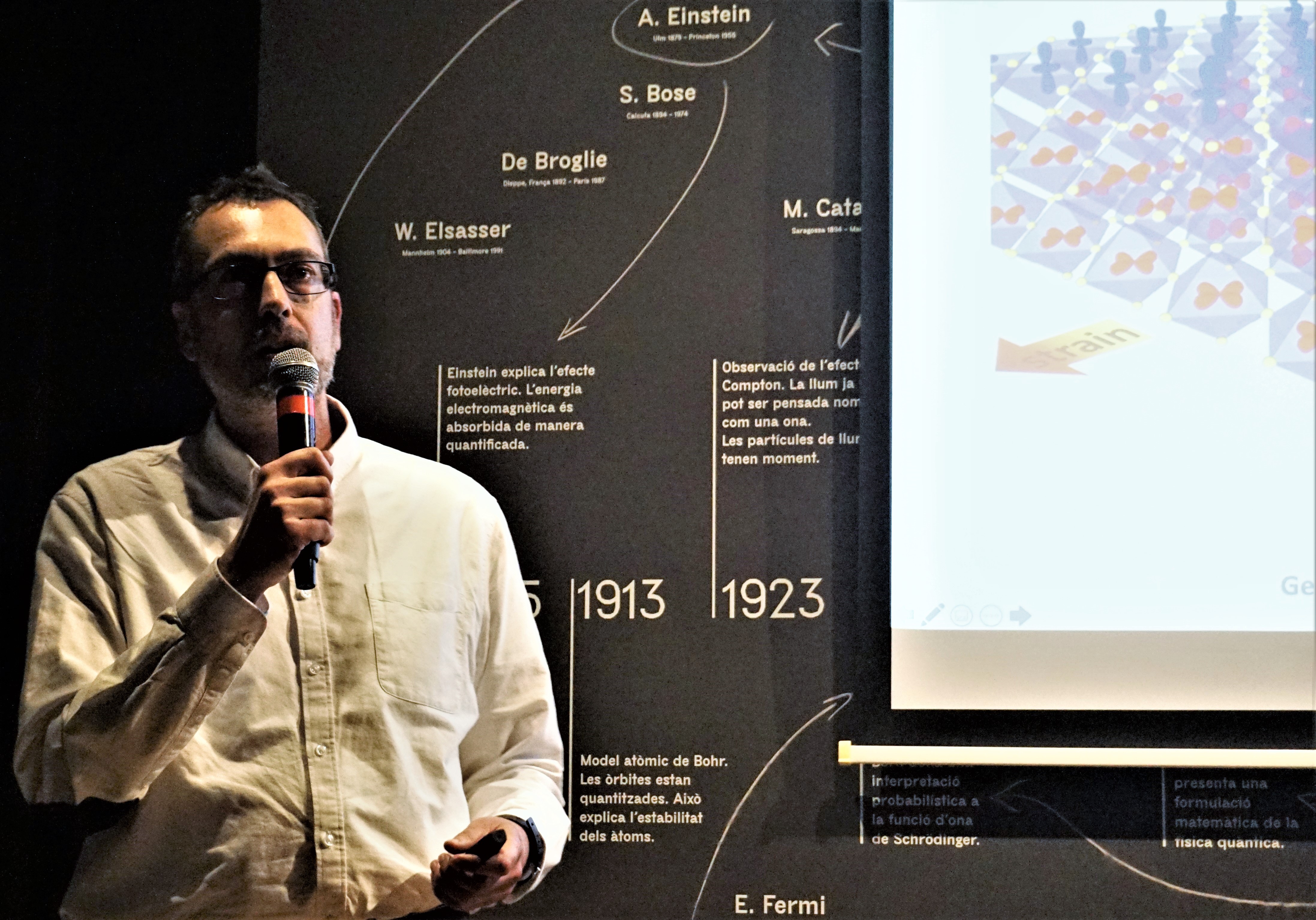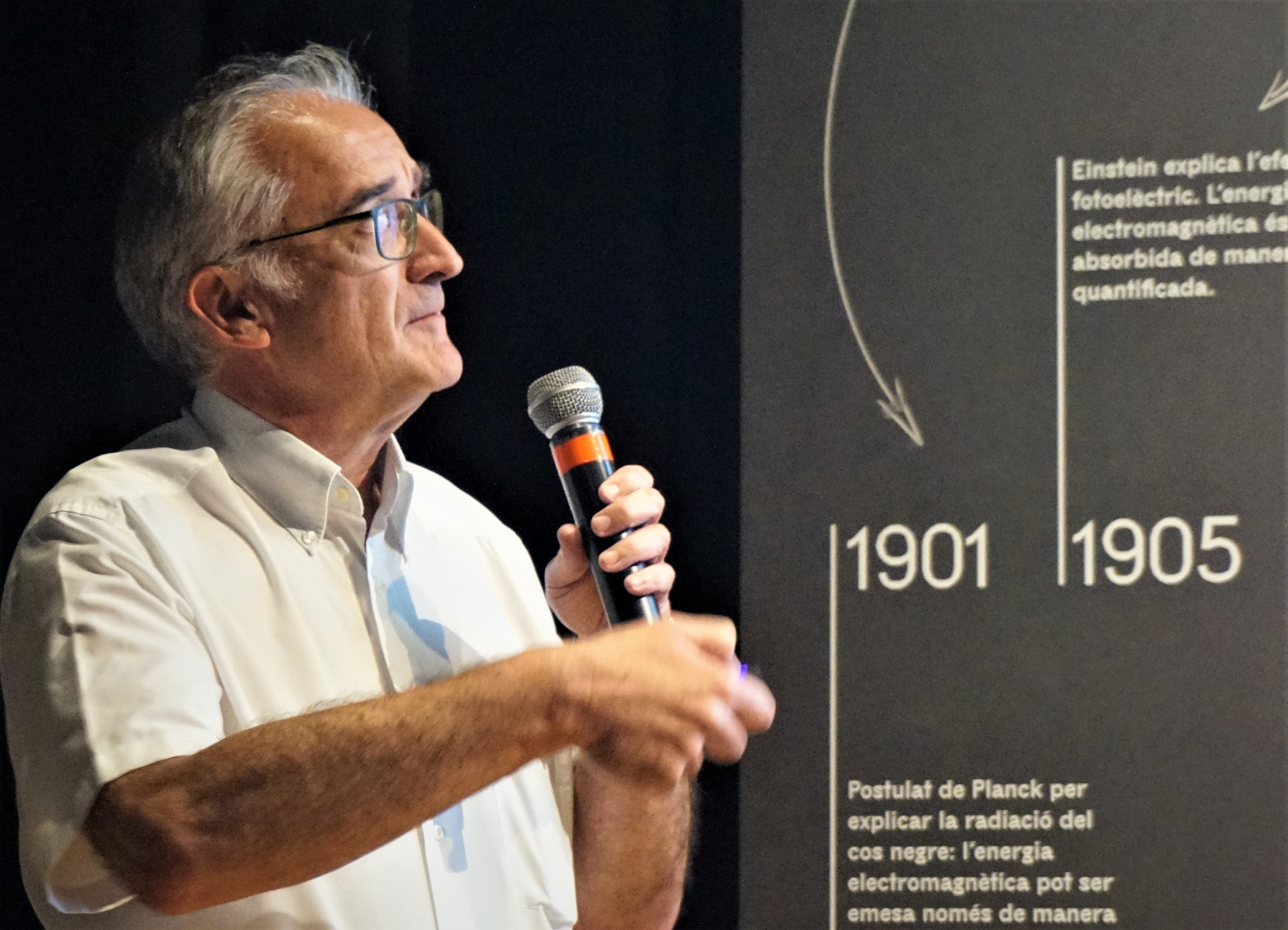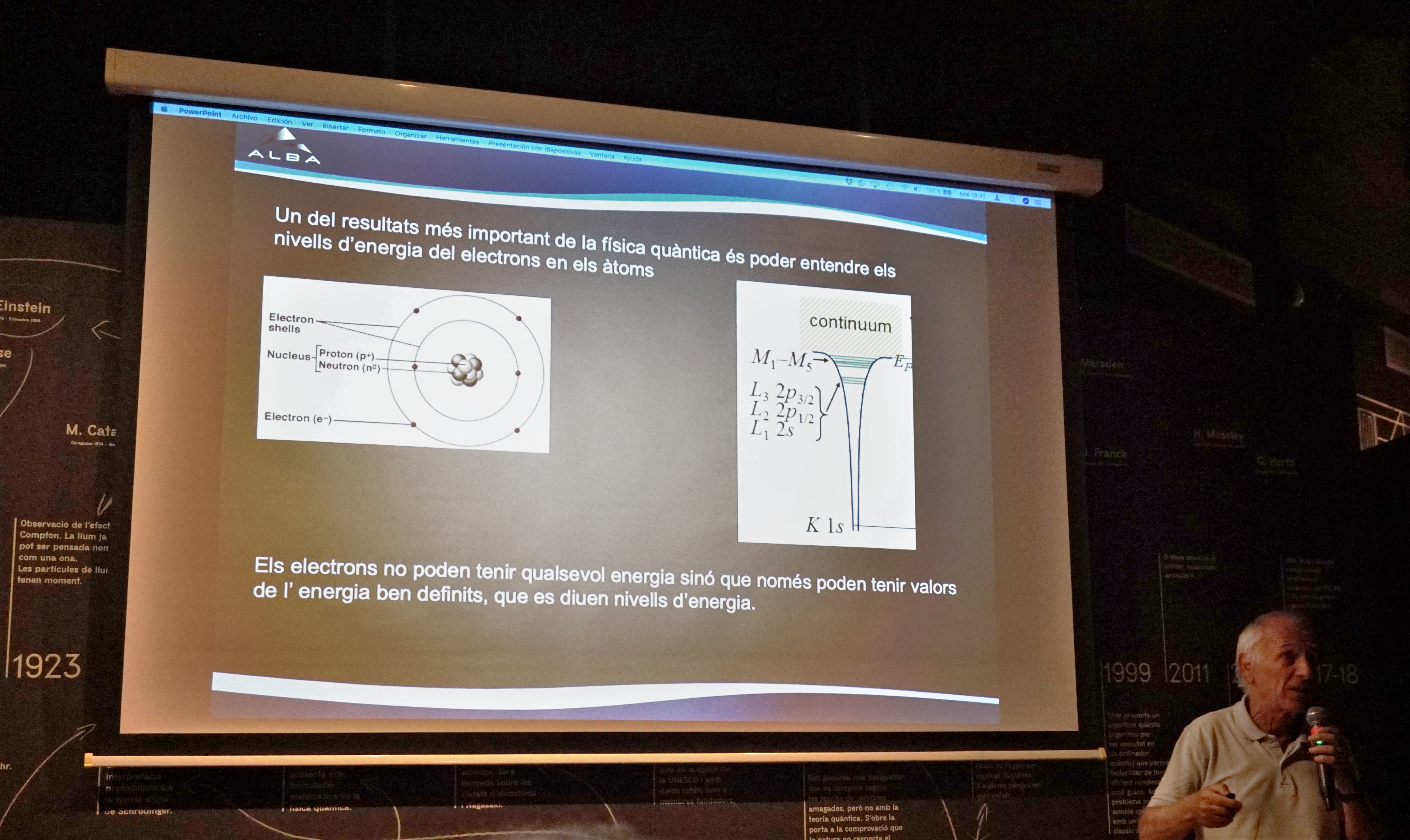Thursday, 20 June 2019
Quantum research with the ALBA synchrotron on stage at the CCCB
A public lecture on quantum research carried out at the ALBA synchrotron was held on June 12 at the Centre of Contemporary Culture of Barcelona (CCCB), in the framework of the Quantum exhibition. Dr. Jordi Fraxedas, from the ICN2, together with Dr. Salvador Ferrer, from ALBA, and Dr. Gervasi Herranz, from the ICMAB, explained how this advanced facility is used to investigate materials.

The ALBA laboratory, located a stone’s throw from Barcelona, hosts a type of particle accelerator called synchrotron, which is used by researchers to perform a wide range of experiments on the quantum structure and properties of materials. Some of these research lines were presented in an informal lecture at the Centre of Contemporary Culture of Barcelona (CCCB) in the framework of the Quantum exhibition.
Addressing a public diverse in age and education, Dr. Salvador Ferrer, from ALBA, Dr. Jordi Fraxedas, from the ICN2, and Dr. Gervasi Herranz, from the ICMAB, introduced the experiments they are involved in and the quantum principles used to explain the results. By analyzing the interaction between the photons of the synchrotron light and the electrons in the materials hit by the beam, it is possible to study their composition and the physics mechanisms determining their properties.
As explained by Dr. Salvador Ferrer, when a photon from the beam having a certain spin (a property of fundamental particles, described as an intrinsic angular moment) meets an electron, the interaction between them depends on the direction of the respective spins. This phenomenon is used to investigate the behaviour of magnetic materials.
Other applications were introduced by the following speakers. First, Dr. Jordi Fraxedas made the attendees rediscover water, a simple molecule we are so familiar with, which actually still holds some mysteries. Indeed, water reveals a complex nature when interacting with other molecules and surfaces. These properties, which can be studied at the ALBA synchrotron, are relevant to a number of different applications, spanning water remediation and sanitation, air purification, development of clean fuels, and engineering of self-cleaning materials, to mention a few.
Then, Dr. Gervasi Herranz extended the discussions on how quantum mechanics describes the physics reality of our world at very small scale and introduced an interesting study of electric conduction at the interface between materials with different crystallographic characteristics.
The event was set in the Estación Beta, in the heart of the Quantum exhibition, which is currently on display and will be open until mid-September. Through two parallel itineraries, a scientific and an artistic one, the exhibition introduces visitors to the fascinating world of quantum mechanics and the change of paradigm in the interpretation of nature that this theory represented. The scientific route proposes a few fundamental quantum principles and laboratory research work, while the artistic one, comprising ten transdisciplinary installations, prompt a reflection on their philosophical implications. The artwork was produced by artists who had the opportunity to spend a residency period of three months at the European Nuclear Research Centre (CERN), in Geneva, thanks to the Art at CERN project.




